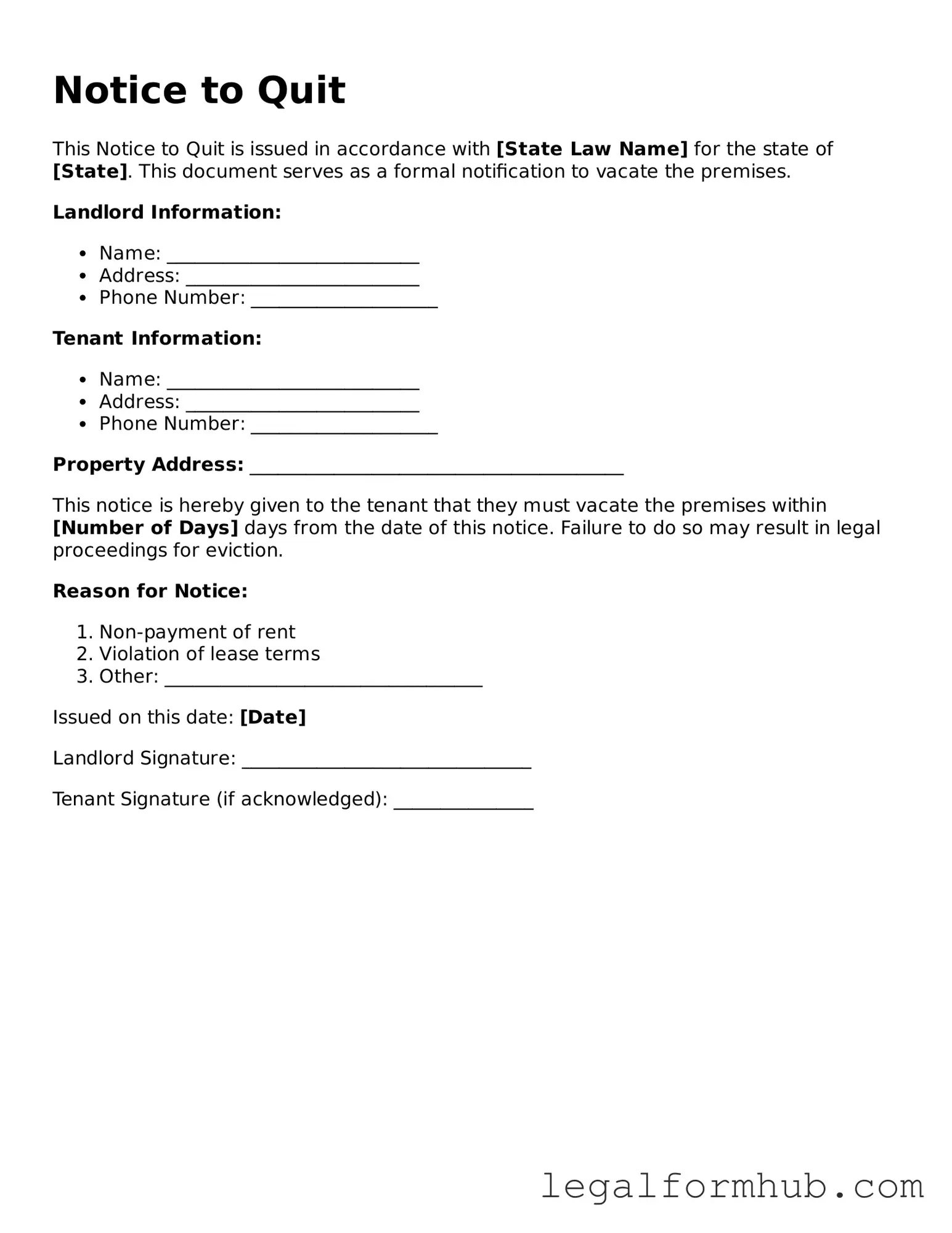The Notice of Termination is a document that serves a similar purpose to the Notice to Quit. It is often used in landlord-tenant relationships to inform a tenant that their lease will not be renewed or that they must vacate the property. This document specifies the end date of the tenancy and outlines the reasons for termination, which may include non-payment of rent or lease violations. Like the Notice to Quit, it provides a formal means of communication to ensure that both parties understand the terms of the tenancy's conclusion.
The Eviction Notice is another document closely related to the Notice to Quit. It is typically issued after a tenant has failed to comply with the terms of their lease, such as not paying rent. This notice formally informs the tenant that they must leave the property, usually within a specified timeframe. While the Notice to Quit may serve as an initial warning, the Eviction Notice represents a more serious step in the eviction process, often leading to legal action if the tenant does not vacate.
The Demand for Rent is a document that is often used prior to issuing a Notice to Quit. It is a formal request for payment of overdue rent. This document outlines the amount owed and provides a deadline for payment. If the tenant fails to respond or pay the overdue amount, the landlord may then proceed with a Notice to Quit. Both documents aim to address issues related to non-payment, but the Demand for Rent is focused specifically on financial obligations.
The Lease Termination Agreement is another relevant document. This agreement is typically a mutual decision between the landlord and tenant to end the lease early. Unlike the Notice to Quit, which is often unilaterally issued by the landlord, the Lease Termination Agreement requires the consent of both parties. It outlines the terms under which the lease will end, including any obligations or conditions that must be met before the termination is finalized.
In situations where legal representation is needed, it’s essential to understand the importance of various documents, including a Power of Attorney. A Power of Attorney (POA) form in Arizona enables an individual to authorize another person to make significant decisions on their behalf, similar to how a Rental Agreement Termination Letter clarifies responsibilities between landlords and tenants. To learn more about creating a POA, you can visit arizonapdfs.com/power-of-attorney-template/, which provides useful resources for drafting this important legal document.
The Written Notice of Lease Violation is also similar to the Notice to Quit in that it addresses issues related to the lease agreement. This document is used to inform a tenant of specific violations of the lease terms, such as unauthorized pets or excessive noise. It provides the tenant with an opportunity to correct the violation within a specified timeframe. If the tenant fails to address the issue, the landlord may then proceed with a Notice to Quit, making this document a precursor to potential eviction.
